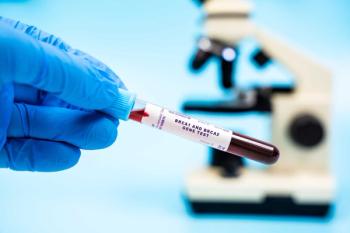
In-State Insulin Manufacturing Will Benefit Californians With Diabetes, Commentary States
Producing insulin in state could help to lower the price for California residents with diabetes in the 3 years following implementation of the CalRx initiative.
The price of
A commentary published in
An adverse effect of the increasing prices of insulin is the decrease in adherence and amount taken by patients. About 1 in 4 people needing insulin have taken less than needed because they were not able to afford it. This leads to patients with diabetes having worse disease control, being more at risk for diabetes exacerbations, having long-term complications, and having higher mortality.
On average, insulin prices are 5 to 10 times higher in the United States vs other industrialized countries. Underinsured and uninsured patients who pay a percentage of the insulin cost need to pay on the basis of list prices, which is significantly more than the net prices paid by health insurers.
In July of 2022, California announced their CalRx initiative, which “intends to develop, manufacture, and distribute drugs at lower costs.” The CalRx Biosimilar Insulin Initiative plans to bring biosimilar insulin products to market with prices significantly lower than current insulin options. These biosimilar products will be available to all Californians who are looking for low-cost insulin within the next 3 years.
The CalRx Biosimilar Insulin Initiative is looking at 3 drugs that meet the criteria of insulin analogue products whose patents and market protections will allow for a biosimilar to enter the market: insulin lispro (references Humalog), insulin aspart (references NovoLog), and insulin glargine (references Lantus).
The authors of the commentary claim that the CalRx initiative plans to disrupt the insulin market. The first of the 2 main ways that the state-led biosimilar products will be introduced includes providing “insulin at transparent, low prices that are close to the cost of production and not inflated by rebates.”
Insulin prices are currently estimated to be 90% lower with CalRx, which can provide financial relief for residents with diabetes. This could save uninsured residents with type 1 diabetes $2000 to $4000 per year when they switch to a biosimilar product. CalRx prices could allow insurers to offer free insulin to their beneficiaries.
The second way that these products will be introduced is through California developing partnerships with health plans, including California Public Employees’ Retirement System and Covered California, which will create a market for the insulin products. This could help avoid supply chain participants profiting off rebates and price concessions that are negotiated for insurers.
California will aim to create a net price model. Medicare Part D plans and other private insurers will have the opportunity to save by incorporating the biosimilar insulin products into the formularies. Lower plan spending, lower patient out-of-pocket costs, and potentially lower premiums are some ways the savings from the initiative could benefit California payers.
Incentivizing patients to switch to CalRx insulins will be a primary goal to achieving success, with lower prices and lower cost-sharing 2 of the biggest pulls for the initiative. Accessibility and availability for consumers will also be paramount in ensuring success of the program. This would also include developing relationships with pharmacy networks.
CalRx will not include glucagon like peptide-1 receptor agonists, sodium-glucose contransporter-2 inhibitors, or other diabetes therapies that are still covered by patients. However, the biosimilar insulin initiative could lay the groundwork for other treatments to be added in the future.
CalRx will be greatly beneficial to underinsured and uninsured residents of California who need insulin.
“The success of the initiative will also contribute to lowering health care premiums and mitigating disparities between those with and without health insurance,” the authors concluded.
Reference
Socal MP, Pegany V, Ghaly M. When states step up: California and the case for state-led insulin manufacturing. Ann Intern Med. Published online November 15, 2022. doi:10.7326/M22-2339
Newsletter
Stay ahead of policy, cost, and value—subscribe to AJMC for expert insights at the intersection of clinical care and health economics.













































